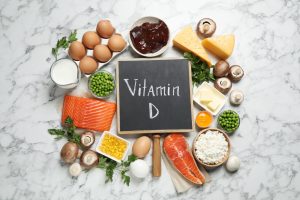
The cold, dry air of the winter can wreak havoc on our skin. Chapped lips are a good indicator that our skin may need some extra attention. But nourishing our skin at this time of the year can be a challenge because the very things that are bad for the skin (such as not drinking enough water, and eating too much sugar and deep-fried foods) happen to be the things we do more of in the winter.
1. Drink enough water:
Our skin is the biggest organ in our body, and like every other organ and body system, it also requires water to hydrate it, deliver it nutrients and take away toxins. But drinking water from the tap isn’t typically appealing when it’s cold outside.
Try this: Always have the kettle on at work or at home, and sip on warm water (or tea) throughout the day. This is also an amazing way to keep warm! Other things you can try are eating soup, and drinking bone broth because it is high in collagen – which is a particularly important nutrient for young, supple skin.
2. Avoid sugar:
Hopefully, this is an easier one to achieve now that the holiday season is over. But still, our bodies tend to crave starchier foods at this time of year because daylight is short and we’re fighting our body’s natural desire to go into hibernation. Ultimately, a tired mind craves sugar because that’s what it runs on.

Try this: Instead of going for the sweets and the cocktails, enjoy starchy root vegetables that also happen to be in season this time of year! Opt for squashes, parsnips, yams, beets, potatoes and sweet potatoes. You can also start your day with a bowl of oatmeal or congee. Fruit is another great source of healthy sugar (as well as antioxidants which are essential for repairing skin cells and keeping the skin clear). Apples and kiwis can be found locally which make them a particularly great source of antioxidants. You can even try
replacing sweets with exotic oranges and pomegranates!
3. Eat healthy fats:
This may be the easiest of the three to achieve because our bodies tend to crave richer, heavier meals at this time of the year. Just be sure you’re eating the right kinds of fats. Some fats can turn on inflammation (red meat and deep-fried foods in particular). The type of fats that are good for the skin are those that turn off inflammation – specifically the omega 3 fatty acids.
Try this: Replace meat with fish. Wild salmon is the best source of omega 3 fatty acids, as are sardines. Try baked wild salmon with roasted winter vegetables (squash, potatoes, carrots, beets) for dinner and sardines on toast for breakfast! A wonderful vegan source of omega 3 fatty acids are walnuts, which makes a great snack to keep on hand throughout the day. Also, if you enjoy salty snacks like deep-fried potato chips, try making some baked kale chips instead.
Here’s how:
Kale Chips
1-2 servings
- 4 – 5 cups kale (available locally throughout the year!)
- 2 tbsp real extra virgin olive oil
- unrefined sea salt (to taste)
- 3 tbsp nutritional yeast (optional)
Preheat oven to 300 degrees Fahrenheit.
Remove the stems from the kale. Tear the kale into small chip-sized pieces. Wash and dry them very well (otherwise the kale chips will be soggy) with a paper towel.
Place the dry kale in a bowl and add the olive oil. Mix well with your hands, until all the leaves are coated. Lay the kale flat on a baking sheet. Sprinkle with salt.
Bake for about 5 minutes.* Remove from oven. Turn the kale pieces upside down and bake for another 5 minutes.
Remove when they are crispy but not burned. Sprinkle with nutritional yeast and enjoy.
*Important: Do not leave kale chips unattended in oven. They burn VERY easily, and the temperature and time depends on your oven.
As always, remember that if you’re dealing with any skin issues beyond the winter blues, check in with your digestive health, as skin issues can be the result of unwellness occurring at your body’s other first line of defence.




